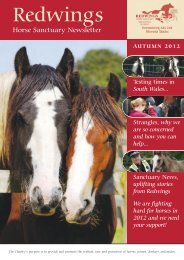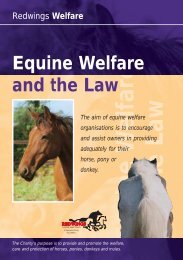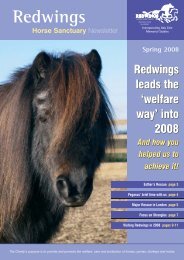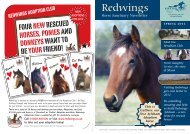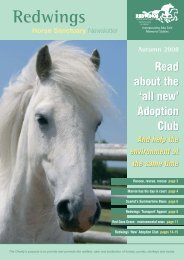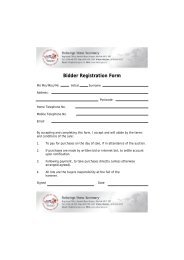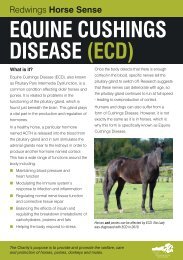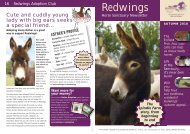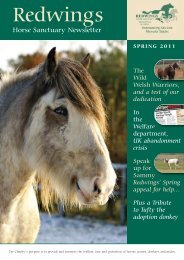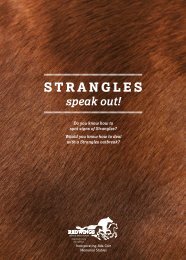Autumn Newsletter 2009 - Redwings
Autumn Newsletter 2009 - Redwings
Autumn Newsletter 2009 - Redwings
Create successful ePaper yourself
Turn your PDF publications into a flip-book with our unique Google optimized e-Paper software.
Horse Care7Focus On...Stallions!Stallions are the stuff of legend; symbols of strength, bravery and highspirits in myths all over the world. The reality of stallion behaviour andmanagement is more down to earth than you might imagine, but doesrequire specific knowledge, skills and facilities to ensure that bothhorses and humans stay safe. Thankfully, <strong>Redwings</strong> has just those skillsand resources and we are regularly called on to provide rescue andrehabilitation for these very special horses.A stallion will happily live with his mares andoffspring in a feral herd like this one in Cornwall.Members of the herd will often demonstrate tothe stallion that he is accepted as the boss!The Stallion Job DescriptionIn the wild, stallions have a particular list of jobs. They work hard to protecttheir herd from predators; breed with their mares; fend off the attention ofother stallions and maintain their position as head of their herd. In naturalcircumstances, stallions are not aggressive, only defensive if the need arises.But if a stallion or his mares are threatened, he is likely to use all his strengthand determination to protect himself and his herd.Stallions at <strong>Redwings</strong><strong>Redwings</strong> does not keep stallions as stallions. Our vets usually castratestallions soon after their arrival so that they can live happily with other horseswithout trying to mate or compete with other males! Being a stallion is a highpressure job and they can be anxious, sensitive animals; but within a fewweeks a newly gelded horse should start to relax and take life more easily.Older stallions can be more challenging because, although they are nolonger fertile, they may still think and behave like a stallion. At <strong>Redwings</strong> wetherefore provide older stallions with a few close companions on a quietpaddock once they have been castrated. Caring for stallions requires specialskills - some <strong>Redwings</strong>’ staff are very experienced at handling stallions andknow just how to behave around them. In fact, some <strong>Redwings</strong>’ staff tell us itis often easier to work with a stallion than a moody mare!These handsome chaps, Leicester and Romeo,were rescued as older stallions. Although theyare now castrated, they are kept in their happybachelor group with no mares allowed!Waiting for a New Lease of LifeMany of <strong>Redwings</strong>’ rescued horses board with us on behalf of anotherorganisation, such as the RSPCA, while legal action is being taken. If astallion is boarding with us, we can usually only castrate him once the caseis resolved and he is signed over into our ownership which may take manymonths. During this time stallions may need to be kept in their own paddock;though we always ensure they have friends nearby (males, not mares!).These paddocks have to be carefully set up and secured as stallions arerenowned escape artists and lots of excitement nearby or the scent of marescan make them determined to get where the action is! Our main purpose incastrating stallions as soon as possible is to allow them to safely join a herdand relax in the social environment that all our <strong>Redwings</strong> residents thrive on.Yogi and Marley were rescued from SpindleFarm in January 2008. They are very close andlive happily together while the court caseprogresses, as long as there are no mares forthem to compete for!




